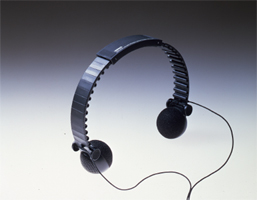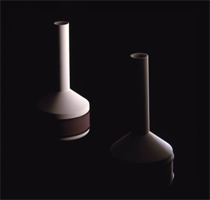![[Photo] Yamaha TENORI-ON](/en/news_release/2009/images/0909010101.jpg)
[Photo] Yamaha TENORI-ON
Yamaha Corporation (Head Office: 10-1, Nakazawa-cho, Naka-ku, Hamamatsu, Shizuoka; President: Mitsuru Umemura; hereinafter, Yamaha) is pleased to announce that its TENORI-ON has recently been selected for inclusion in the collection of the Architecture and Design Department of New York’s Museum of Modern Art (MoMA). Until recently, four Yamaha products had been selected for inclusion in MoMA’s collection-, and the TENORI-ON has now become the fifth to be chosen. The TENORI-ON is a new digital musical instrument for the 21st century, which Yamaha first marketed in the United Kingdom in September 2007 and subsequently in North America, Europe, and Japan.
For more information about MoMA, please visit www.moma.org.
Outline of TENORI-ON
TENORI-ON is the product of a collaboration between Toshio Iwai, a leading media artist who provided the idea and design, and Yamaha, which provided its electronic musical instrument technology. Physically, TENORI-ON takes the shape of a square board, 205mm by 205mm, with a matrix of 16 vertical and 16 horizontal rows of LED buttons, or switches, (for a total of 256 in all), which, when blinking on and off, provide a visual image of the structure of the music. When these buttons are touched directly, it is possible to compose music intuitively, even without specialized knowledge of music, and enjoy playing with sounds. It is also possible to perform compositions in real time as the player is composing them. TENORI-ON is therefore a completely new electronic “visible music” interface between the player and the world of music. The TENORI-ON unit has grip-shapes on right and left sides of its body, which is made of magnesium. The player holds the TENORI-ON unit with both hands, in a distinctive performance style for a musical instrument. The buttons and the size of the unit have been designed precisely to allow the player to touch all of the buttons with either his right or left thumb. In addition, the unit has been designed so that 256 LEDs on the rear of the unit light up to allow persons on the listener side of the stage to see the performance in action—which, without doubt, is a truly unique design. It is certainly also worth noting that TENORI-ON and Toshio Iwai won the Grand Prize in the Entertainment Division of the 12th Japan Media Arts Festival sponsored by Japan’s Agency for Cultural Affairs in February 2009.
Other Yamaha products that have been selected for inclusion in the permanent collection of MoMA’s Architecture and Design department are:
1978: Mario Bellini Cassette Deck/TC-800GL
1985: Porsche Design Stereo Headphones/YHL-003

1989: Yasuhiro Kira (formerly head of Yamaha’s Product Design Laboratory) Wind MIDI Controller/WX7

1991: Kozu Design Audio Speaker/YST-SD90

Profile of Toshio Iwai
Mr. Iwai began the creation of experimental animation works when he was at University of Tsukuba. He made the transition to works making use of computers, and, in 1985, became the youngest artist to win the Grand Prize in the 17th Modern Japanese Art Exhibition, with his work “Time Stratum II.” In 1997, Iwai and Ryuichi Sakamoto won the Golden Nika Prize in the Ars Electronica Festival for their joint work “Music Play x Images Play Music.” In recent years, through his “ELECTROPLANKTON” (Nintendo DS), Iwai has drawn on the latest technologies to express the concept “Enjoying Sound and Light.”
TENORI-ON related websites
| Official TENORI-ON website | http://www.global.yamaha.com/tenori-on/ |
|---|---|
| TENORI-ON design website | http://www.global.yamaha.com/design/tenori-on/ |
Contact
Satoshi Miura
Sound Network Division
Yamaha Corporation
- Tel: +81-53-460-3468
- Fax: +81-53-460-2829
- e-mail: satoshi_miura@gmx.yamaha.com